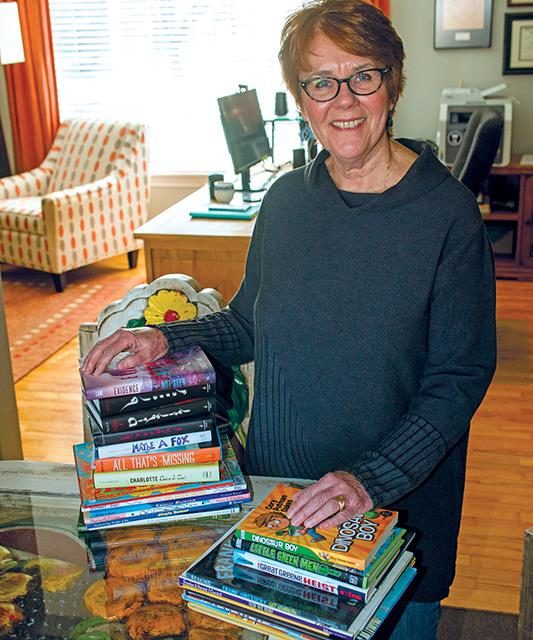In my nightmares, I am drowning in a sea of china sets, old clocks, early American furniture, dozens of duck and fish decoys, antique tools I can’t identify, rows upon rows of glass jars filled with every conceivable shape and size of screw and nail, canoes, paddles, kitchen utensils, and a mountain of paint cans.
Not long ago, this wasn’t a nightmare. It was my life. When my father was admitted to an Alzheimer’s ward and my eighty-five-year-old mother abruptly sold their house in Maine, I had two weeks to sell or give away more than 95 percent of their possessions–which also included their parents’ and grandparents’ collections. I am sentimental. I am a historian. I was the worst person for that job.
I distributed as many heirlooms as my sisters and nieces would take. (“Just one more rocking chair/bureau/braided rug/family photograph/duck decoy? It was your grandmother’s/great-grandmother’s/great-great-grandmother’s,” I pleaded.) I held a garage sale. I took nine trips to Goodwill, ReStore, and Purple Heart. Then I drove a packed SUV and U-Haul trailer home to Michigan. Several times.
I came home with two aims: to convince my children to adopt these last family legacies, and to get rid of my own detritus long before I was eighty-five.
The time has come.
—
I turned first to experts. Carolyn Anderson-Fermann of Dexter has made a business out of tidying up. Twelve years ago, she founded a business she calls Simply Organized Life after teaching in Japan, working in the auto industry, and earning an MBA from MSU. “We can fool ourselves into believing we’re organized if we have stacks of bins and boxes, but messes are far more insidious–they prevent us from enjoying true peace and relaxation,” she says. Her mission? To help ambitious, overworked women develop strategies and tools to get organized–and stay organized.
Anderson-Fermann uses some of the principles Marie Kondo lays out in The Life-Changing Magic of Tidying Up, but has also developed her own methods. At times, she sounds more like a therapist than an organizer: she tells clients to “determine what you need in order to live your life intentionally,” then “learn to work with maximum productivity.” She recommends that people plan out tasks, then “embrace routines and rituals” to “eliminate the need for constant decisions” about chores like meal preparation and house cleaning. This way, more time is freed up for meaningful activities–“a walk in a park, reading a good book, or time with friends.” Above all, she urges her clients to “realize that we have everything we need for a happy life–no matter what we have.”
The mother of two children and one puppy practices what she preaches. “Our goal is to live as simply as possible. We plan our activities around family time and free time–those are our priorities.”
Suzanne Bayer of Webster Township became a Kondo disciple after reading Life-Changing Magic on a long airplane ride. “She asks you to empty out closets and drawers, put your hands on everything you own, category by category, and ask yourself if it sparks joy,” Bayer says. “If it doesn’t, thank it for its service and get rid of it.”
Last year, she piled a mountain of clothes on her bed, selected a few to keep, and carted away the rest in eight bags. “The process wasn’t painful, but it was exhausting,” she says. “Letting go of possessions is hard, especially if you think you might need some of them in the future. But I actually felt joyous once the task was done.”
Bayer next emptied her kitchen cupboards. “That was an epiphany. I’d moved those things from Pennsylvania to Kansas to Michigan thinking someday I might be a good cook and need them. I finally acknowledged that I don’t like to cook and never will. That was an immense relief. I decided to get rid of many of those things.”
Then she purged her pantry, knickknacks, books, and craft supplies. She made it a goal to review as many possessions as possible before her church’s spring rummage sale, and donated countless bags and boxes. Afterward, Bayer marveled–and continues to marvel–at how open, spacious, and gracious her home felt. “I haven’t once said, ‘I wish I’d kept those,'” she says. “Now I like everything in my house.”
That’s not the only benefit. “The biggest change is how I approach shopping now,” she says. “I think carefully about every single thing I purchase. Tidying up saves me money and time.”
—
Even an involuntary purge can help illuminate priorities. Tina Muchmore’s Webster Township house and 90 percent of its contents were destroyed by fire two years ago. “What I learned was that they were just things–disposable things,” she says. Firefighters labored to save precious family photographs, and Muchmore kept them, despite their smoky smell and singed edges. “The only things I really regret losing were the kids’ books and toys I had been saving for grandchildren,” she says. “We bought replacement furniture that was very different from what we had before–and we focus on what’s really important: the people who use that furniture.”
—
“Once you go through the process, you’ll never look back. I guarantee you’ll feel remarkably free,” promises Debbie Gonzales, a children’s writer living in Saline.
Three years ago, she and husband Rob left a “big ole Texas house, cluttered, with jam-packed cabinets and closets” for a house one-third that size in Michigan. To prepare for the move, she watched the film The Minimalist and researched downsizing methods and philosophies. “There are very interesting people doing interesting things with their lives,” she says, citing Tammy Strobel, an advocate of the Tiny House movement (rowdykittens.com) and millennial Colin Wright, whose “Exile Lifestyle” (exilelifestyle.com) includes packing the fifty-four items he owns into two large bags for instant mobility. (“If nothing else, he offers great packing tips.”)
Gonzales started downsizing by following Courtney Carver’s “Project 333–Be More With Less” (bemorewithless.com/project333). “Courtney Carver challenges people to identify thirty-three items of clothing, accessories, jewelry, outerwear and shoes for every season of the year.” Gonzales did that–and then gave away the remaining clothes hanging in her closet, many still with tags.
“I became almost fanatical about limiting myself to thirty-three items,” she says. “My dress style changed radically. I can honestly say I like–and wear–everything I own. Before, when I went to Von Maur, I hurried to the sales rack and bought stuff I might–or might not–use. Now I take the time to admire all the new items–and then I buy the one thing I went there to buy. If it’s a pair of shoes, I get rid of a pair of shoes when I get home.”
Before the movers arrived, she followed Marie Kondo’s “almost-ninja-like” philosophy. She gave away 300 books–“which is painful for a writer.” She scrutinized every piece of furniture to decide which would make the trip. Her large hand-carved Texas dining table made the cut; some family heirlooms and furnishings from their early married days did not. The table is now the focal point of her open-concept first floor.
“At the start of the process, John and I had a defining Come-to-Jesus moment about our finances,” she says. “Now we’re darn near debt-free. That’s all part of the simplicity and minimalist mindset.
“Paring down and tidying up are immensely liberating. It’s tremendously beneficial for your budget as well as your peace of mind. We have so much less to take care of–and so much more time. When you pare down the clutter, you see life clearly. It’s easier to focus on what life is all about.”
All right. I’m convinced. First stop: my closet.




Yes yes yes yes yes!!!! I love this article!!!
A few years ago my partner died suddenly, leaving behind a huge number of *things*. Since then I’ve been getting rid of his stuff, and also my own, partly because my home feels better when it is less cluttered, and partly because I don’t want to leave a scary amount of possessions for my next-of-kin to someday have to deal with. It’s a slow process, but getting things out of my house feels very good. I have not regretted giving anything away, and living in a less-cluttered home is wonderful!